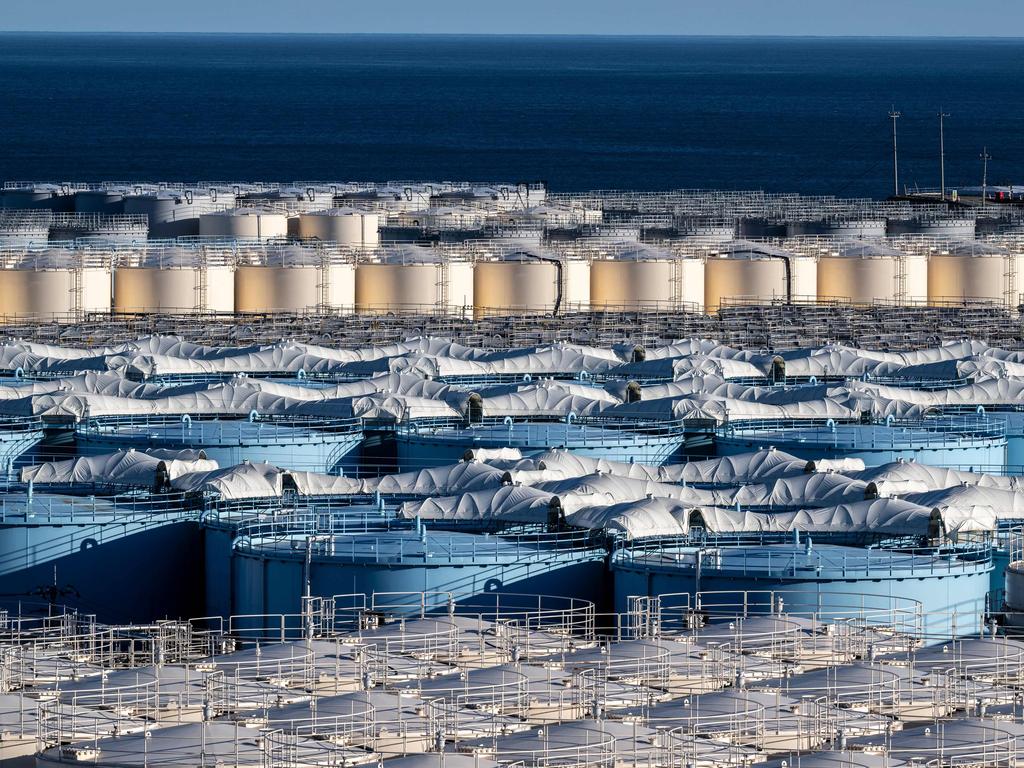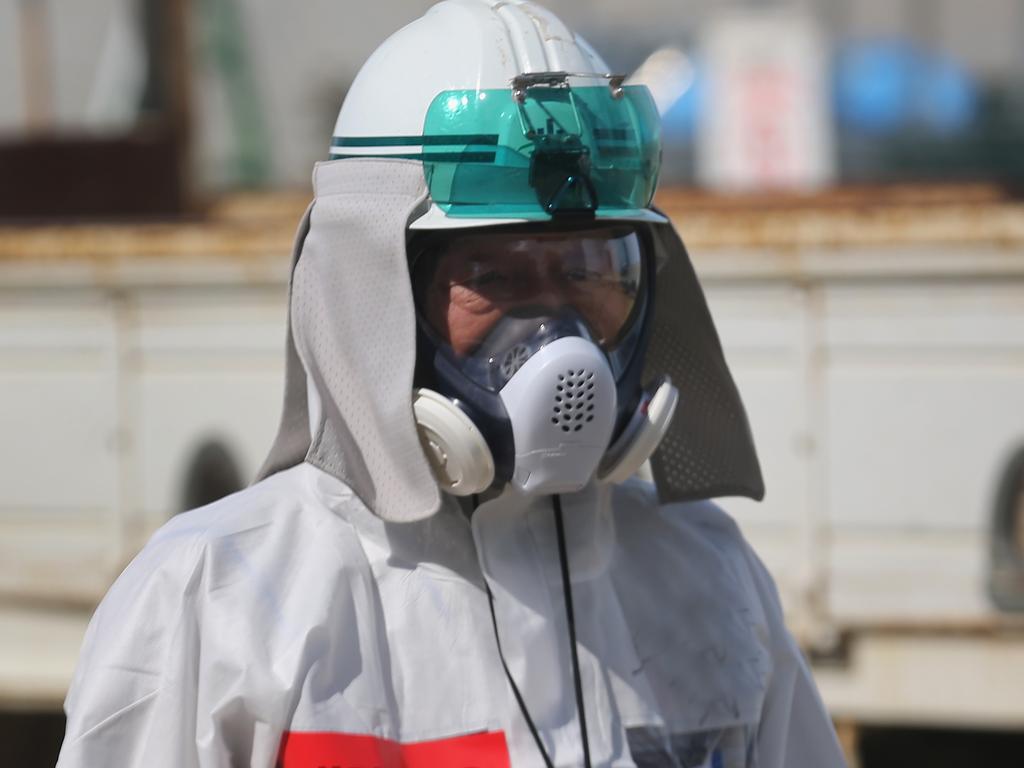‘Grave concerns’ as Japan’s plan to release Fukushima water into the sea approved by nuclear watchdog
Japan’s nuclear meltdown 12 years ago led to a bandaid solution for radioactive waste. Now, time has run out and the next option is unthinkable.

The UN’s international nuclear watchdog has come under heavy criticism after green-lighting Japan’s controversial plan to slowly dump radioactive water used to stem the 2011 Fukushima disaster.
When three reactors first went into meltdown over 12 years ago, nuclear authorities around the globe knew what was at stake. But a hasty bandaid fix — 1000 massive containment tanks built onsite — was never going to solve the issue long term. And now it appears time has run out for authorities looking to move forward.
Two years ago, Japan announced plans to gradually release the 1.33 million cubic metres of contaminated water into the sea over the next 30 to 40 years. Their strategy has now been approved after a lengthy review phase by the Atomic Energy Agency (IAEA), which claims the water will be processed to remove almost all radioactive elements, except tritium.
Efforts are now being made by nuclear and political authorities to ease public suspicion, with IAEA chief Rafael Grossi meeting with Fukushima residents this week in an effort to quell concerns.
However, one thing in particular has sparked intense backlash from surrounding nations and a portion of the global nuclear field. Within all the official box-ticking and PR campaigns urging confidence from the public, nuclear officials cannot be 100 per cent certain their plan will be safe and effective.
“These are global issues and need to address in a holistic manner,” Professor of Genetic Toxicology Awadhesh Jha told news.com.au. “Very limited information is available and we need to do more to assess the long-term effects, both with respect to human and environmental health.”
His criticisms echoed those from the Secretary General of the Pacific Islands Forum, Henry Puna, who said the release should be stalled “until we are certain about the implications of this proposal on the environment and on human health”.
In an article penned earlier this year, Mr Puna accused the Japanese government and international watchdogs of negligence, claiming there was no way to know the full impact until after decades of dumping nuclear material.
“The discussions this past year have not been encouraging,” he wrote.
“We have uncovered serious information gaps and grave concerns with the proposed ocean release. Simply put, more data is needed before any ocean release should be permitted.
“Despite this, Japan is continuing with plans for discharge in the spring of 2023, relying on the next four decades of discharge to figure it out.
“It would be unconscionable for us as a region to once again allow ourselves to be lulled into a false sense of security.”
Grossi said he had no “magic wand” that could ease concerns over the long-term implications, but noted the IAEA will set up a permanent office in Japan to review the release over decades.
“We are going to stay here with you for decades to come, until the last drop of the water which is accumulated around the reactor has been safely discharged,” he said on Tuesday.

China, South Korea call for ‘transparent, convincing response’
China has been the most critical of Japan’s closest neighbouring nations, accusing Tokyo of turning the ocean into its “private sewer” and calling on more safety data from the nuclear watchdog.
Chinese officials have also accused the Japanese government of breaching “international moral and legal obligations”, warning that if the plan goes ahead, Japan “must bear all consequences”.
“Japan should stop the plan to release the water into the sea, but seriously consult with the international community and consider a scientific, safe, transparent and convincing response,” China’s ambassador to Japan said on Tuesday.
Meanwhile in South Korea, public polls revealed 80 per cent of the country are deeply concerned about the unknown long-term effects of the water release.
The South Korean government now appears to have ignored the public’s concerns, saying it “respects” the IAEA’s findings.
“The government enforces a strong no-littering policy at sea … But now the government is not saying a word (to Japan) about the wastewater flowing into the ocean,” Park Hee-jun, a South Korean fisherman told BBC Korean.
“Some of the officials say we should remain quiet if we don‘t want to make consumers even more anxious. I think that’s nonsense.”

Tetsu Nozaki, chairman of the Fukushima Prefectural Federation of Fisheries Co-operative Associations, argued Japan’s government was misrepresenting local sentiment, which he said remained strongly opposed to the plan.
“We fishery operators are left with no choice but to react emotionally and harden our attitude,” he said.
Seoul has also pledged to undertake “unprecedentedly intense” inspections of all fish products from the region over the next 100 days.
What is in the contaminated water?
The main isotopes of concern amongst scientists are tritium, ruthenium-106, cobalt-60 and strontium-90.
The wastewater from Fukushima will undergo a comprehensive treatment process to effectively remove the harmful elements before being released.
To ensure the safety of the released water, it will be diluted to a concentration of 1,500 becquerels of tritium, which is a unit of radioactivity, per litre of clean water.
In context, Japan’s regulatory limit permits a maximum of 60,000 becquerels per litre. The World Health Organisation sets the limit at 10,000 becquerels.
United States, on the other hand, allows just 740 becquerels per litre.

A radioactive isotope of hydrogen, tritium is one the most expensive, rare, and potentially harmful elements in the world, according to nuclear engineer Arjun Makhijani, a prominent anti-nuclear campaigner and president of the Institute for Energy and Environmental Research.
In his book Exploring Tritium’s Danger, Makhijani claims that “one teaspoon of tritiated water would contaminate about 100 billion gallons of water to the US drinking water limit; that is enough to supply about 1 million homes with water for a year”.
US Nuclear Regulatory Commission meanwhile acknowledges that “any exposure to radiation could pose some health risk”, but added that “everyone is exposed to small amounts of tritium every day”.
How will Japan’s plan work?
The diluted water will be discharged into the Pacific Ocean to Japan’s east via an undersea tunnel located off the coast.
With the IAEA’s approval, pumping could commence as early as August.
Throughout the process, independent organisations will closely monitor the discharge, both during and after its release, to ensure its compliance with safety standards and regulations.
But according to Professor Jha, further research is essential to comprehensively assess the potential risks posed by tritium to the marine food chain.
Professor Jha’s laboratory experiments indicate that tritium has the ability to accumulate in the tissues of shellfish, such as mussels and oysters.
He believes actual consequences of real-world exposure remain largely unexplored and require closer investigation.
“It needs an international research effort,” he said.

Professor Jha’s criticism came as the Tokyo Electric Power Company, the firm that runs the site, admitted the giant mass of water will need additional, “secondary” treatment to reduce the presence of other isotopes including ruthenium-106, cobalt-60 and strontium-90.
But there are still concerns over whether the water being released will have been completely cleansed before coming into contact with sea life.
“Unlike tritium, cobalt-60 is 300,000 times more likely to accumulate on the seafloor at the outlet of the pipes,” Ken Buesseler of the Woods Hole Oceanographic Institution said.
“It will build up over time, it will accumulate. So whatever amount you put in, it doesn’t just dilute away.”
What are the other solutions?
While Professor Jha aired criticisms over the unknowns of tritium being released en masse into the ocean, he admitted the Japanese government has no other immediate solution to the problem. Lying in a heavy earthquake zone, the threat of the tanks being damaged remains the more pressing risk.
If the tanks collapse in another natural disaster, the land will be flooded and nuclear authorities will be back at square one with another crisis.
Buesseler on the other hand advocates for the treated water to be used in concrete production for massive buildings around the Fukushima plant.
Buesseler argues this would generate the least risk, with “little potential for human contact, as the concrete being used on the Fukushima Daiichi site and/or tsunami barriers for coastal protection”.

“Since contaminated water is still being generated, this ocean dumping – that is what it would be called if the water were put in a barrel and thrown overboard – of radioactive water would continue for 30 years (possibly more),” Buesseler writes.
“The water would still contain some strontium-90 and other radionuclides with attendant risks of uptake associated with seafloor sediments.
“Besides the radioactivity exposure, which TEPCO estimates will be well below 1 millisievert per year, the dumping would also create reputation damage to the fishing and tourist industries, not only in Japan but across other countries in the Pacific region.”
alexander.blair@news.com.au






